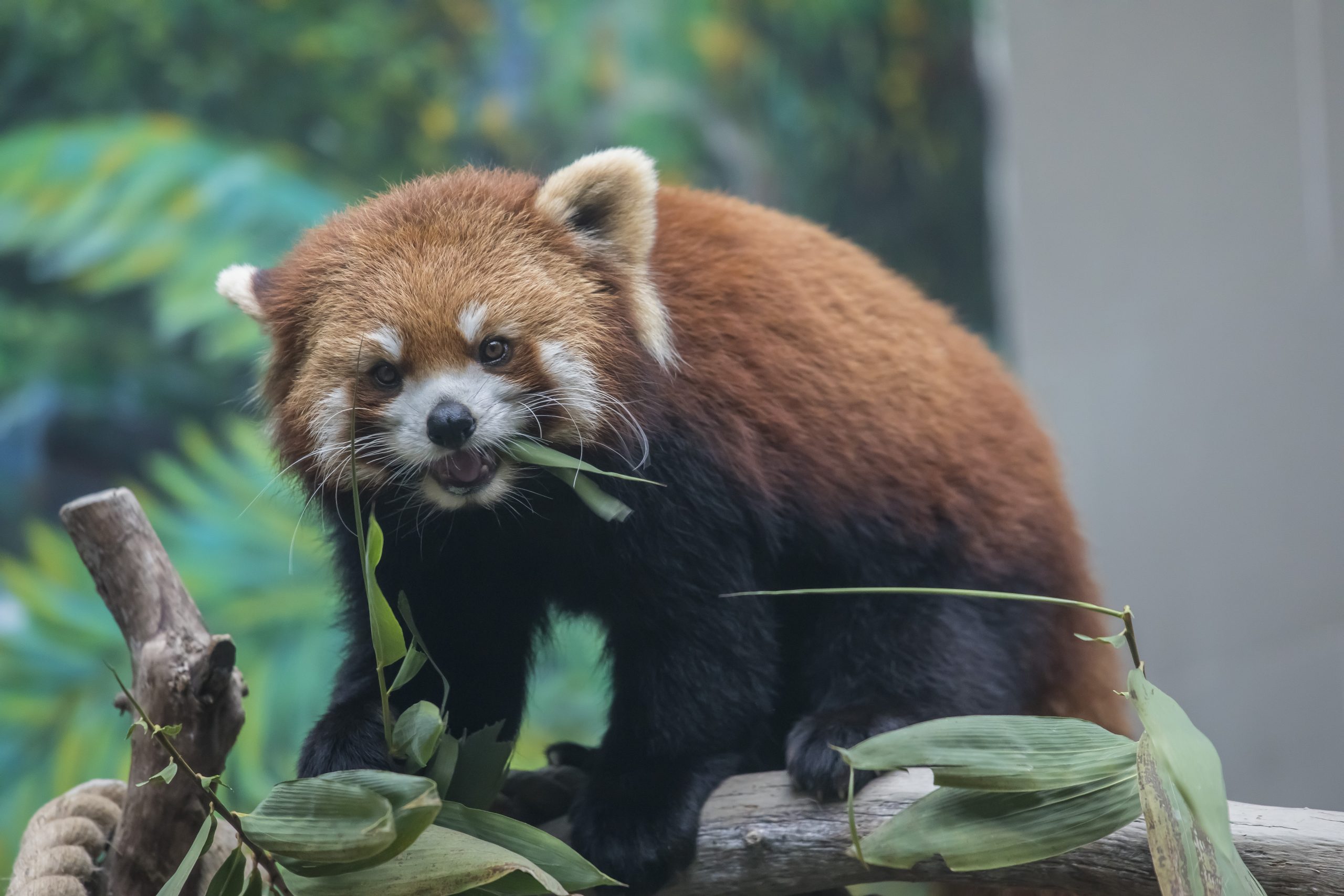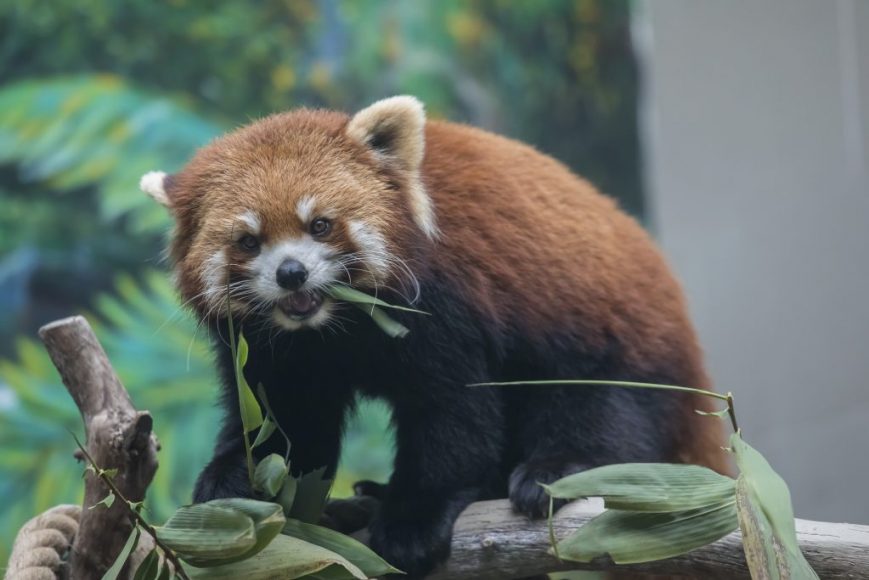PHOTOS Cheong Kam Ka, Eric Tam and courtesy of Civic and Municipal Affairs Bureau
Red pandas have taken up residence at the Seac Pai Van Park in Coloane
Most Macao visitors know that in the heart of Coloane live two giant pandas and their offspring. But many are not aware that two red pandas have recently taken up residence alongside the bigger animals at the Seac Pai Van Park.
Luo Luo, a three-year-old male red panda and companion Tong Tong, a female of the same age arrived at the park via a two-hour flight from Chengdu, China in December 2016.
The red pandas were sent by the Chengdu Research Base of Giant Panda Breeding, and after undergoing a 30-day quarantine, officially made their appearance early this year.
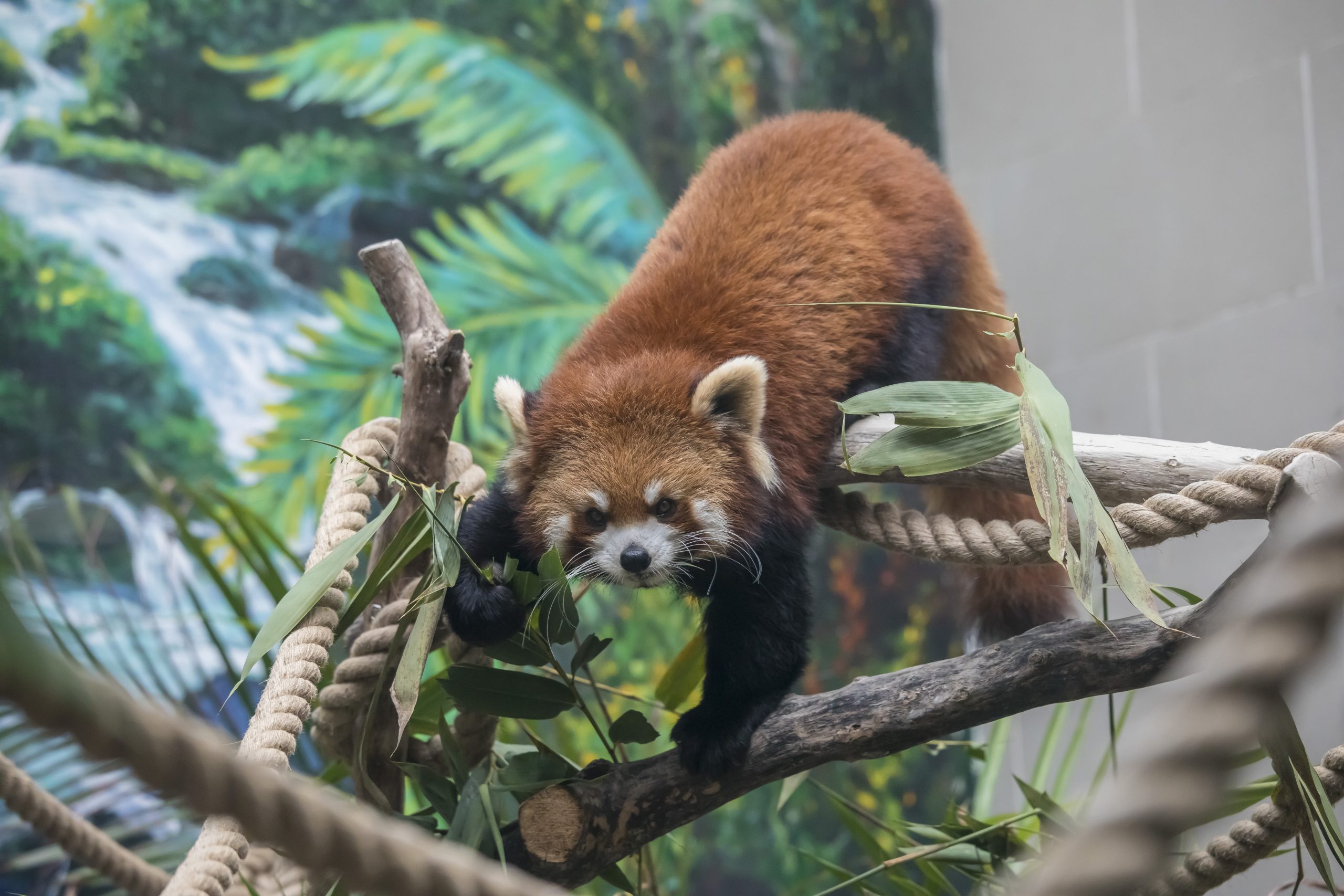
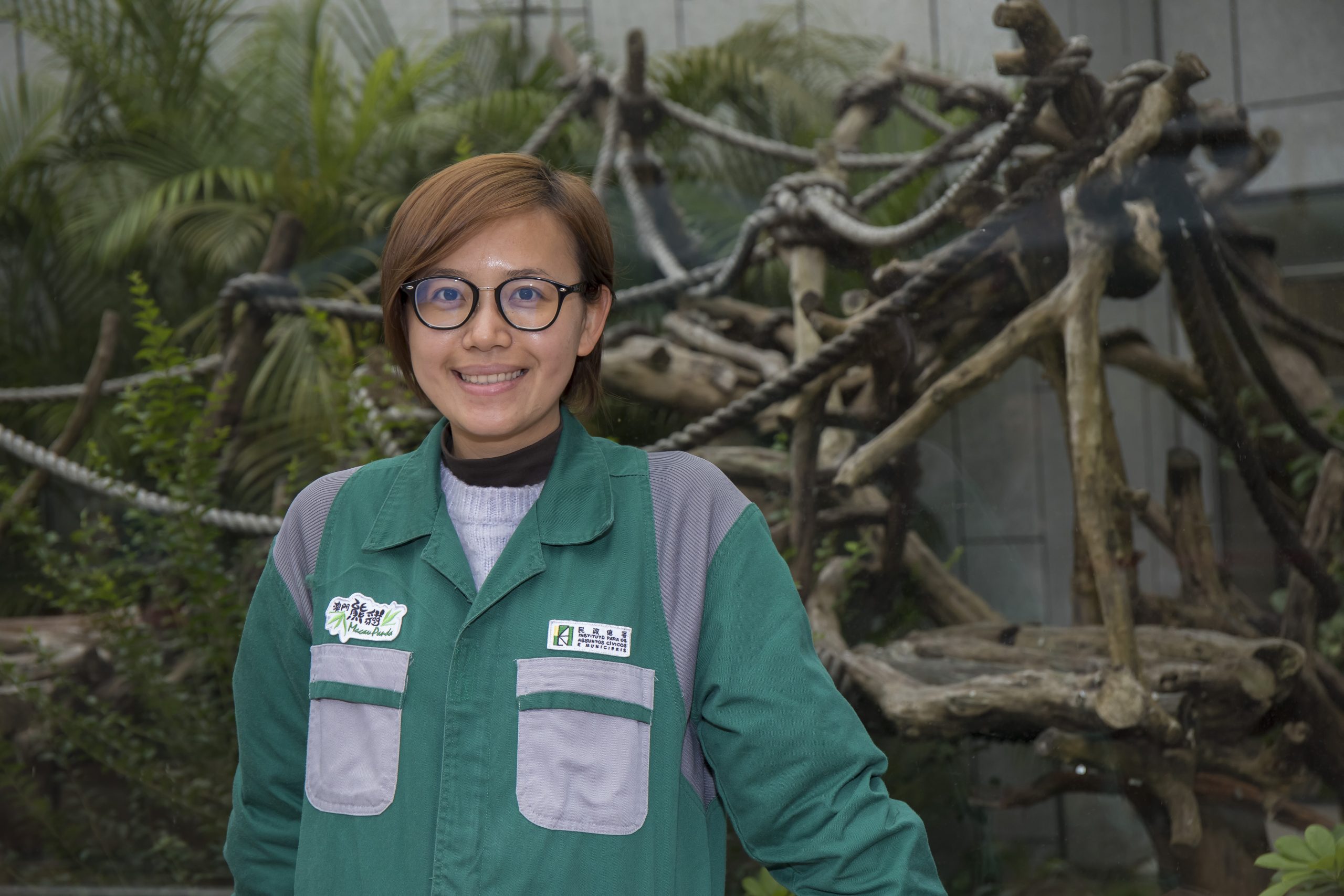
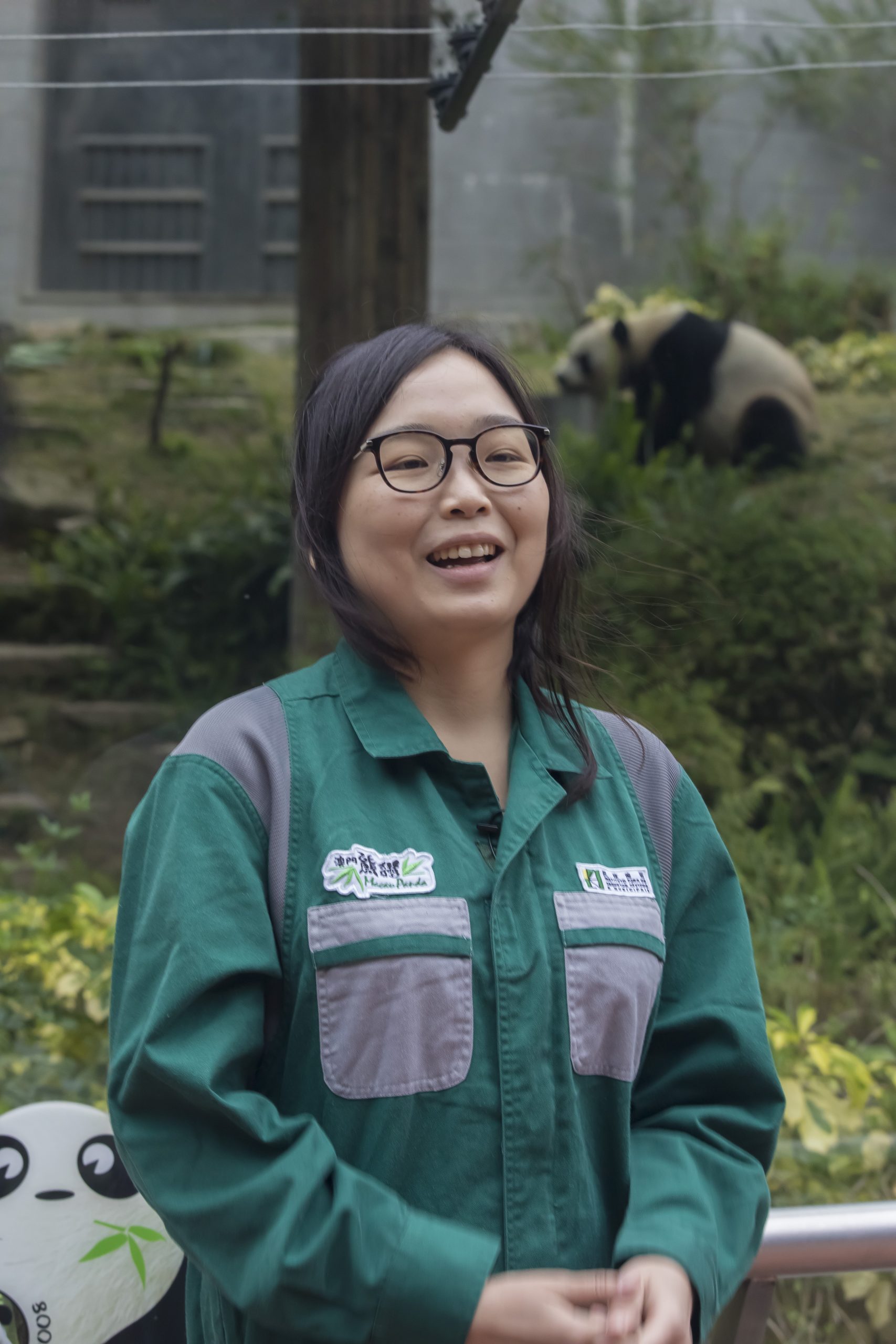
pandas’ caretaker | Photo by Eric Tam
They join Kai Kai and Xin Xin, male and female giant pandas who are eight and nine years old respectively. They have been mainstays at the park’s 3,000-square-meter Giant Panda Pavilion since 2014. Gifted to Macao by the Chinese government to celebrate the 15th anniversary of the handover, they’re parents to twins Jian Jian and Kang Kang, who also live at the park.
Though often nicknamed “the lesser panda,” red pandas Luo Luo and Tong Tong hold their own at Seac Pai Van Park, drawing in admiring crowds who “ooh” and “aah” their way through their visit.
With adorable features, furry appearances and a friendly, gentle vibe, it’s no wonder that the red pandas fascinate the park’s visitors.
“Red pandas are small, active, and have these long tails,” says Zoie Chao, a handler at the park who looks after Luo Luo and Tong Tong.
But that doesn’t mean people don’t love the giant pandas, too. “Giant pandas are big, round animals and look cute when they’re eating. These kinds of things make people like them,” says Avis Mok, who takes care of Kai Kai, Xin Xin and their twins.
The biggest differences between giant pandas and red pandas are in their appearances. Black-and-white giant pandas weigh about 110 to 150 kilograms, while red pandas are much smaller, tipping the scales at between 3 to 6 kilograms.
Red pandas are distinguished by their red and brown fur, long tails, and a “false thumb” in their paws which helps with grip. “In Cantonese they’re nicknamed ‘fire foxes’,” says Chao.
While the red pandas’ enclosures are smaller, the Giant Panda Pavilion comes complete with activity areas indoors and a yard outside. Guests can view the pandas through a glass panel as they roam around in spaces that are decorated to mimic their natural habitat, decked out with toys.
Pandas – day in, day out
So what’s it like to care for these pandas day in, day out?
Firstly, handlers at Seac Pai Van Park undergo rigorous training before taking up their roles as zookeepers.
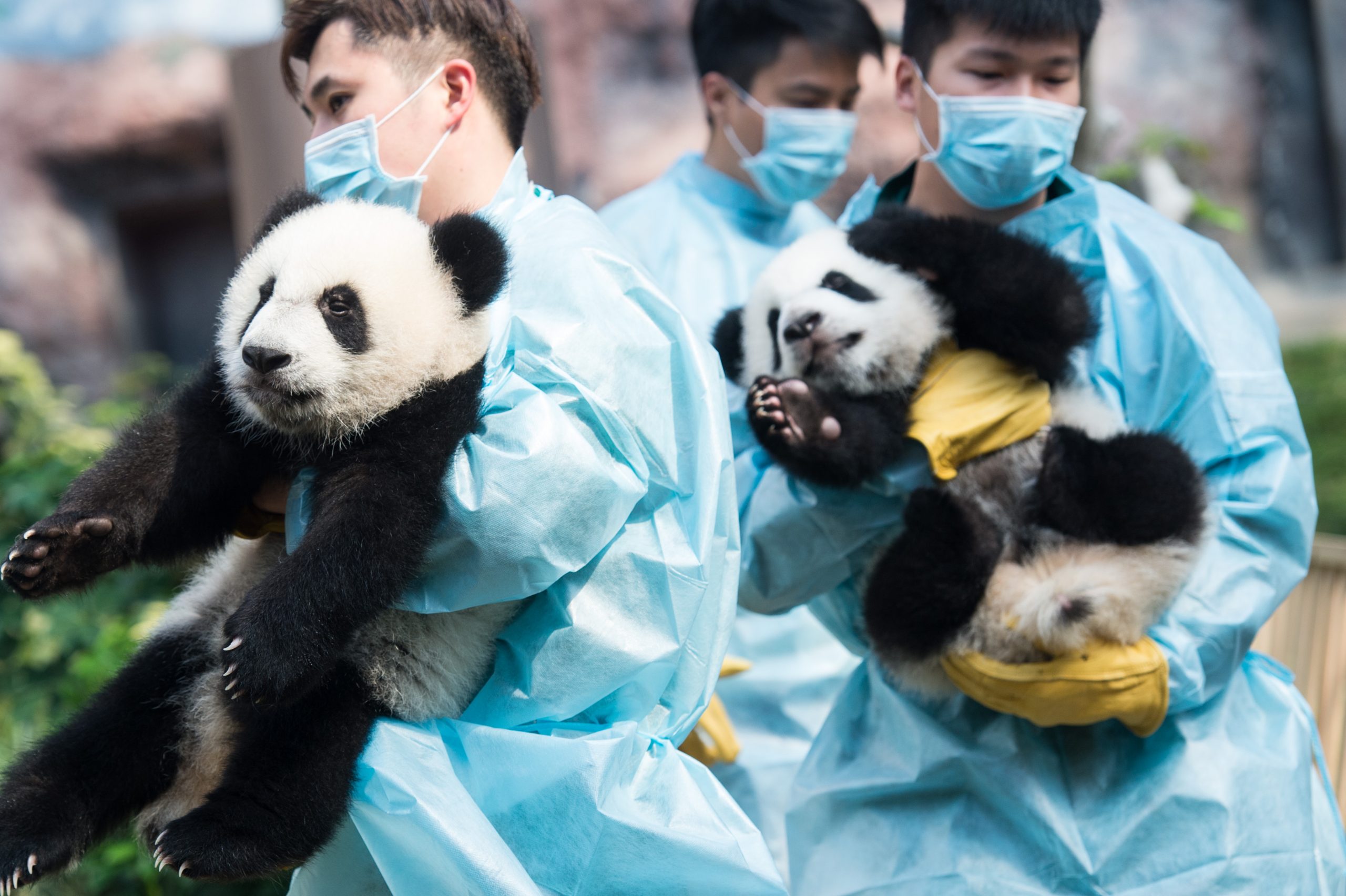
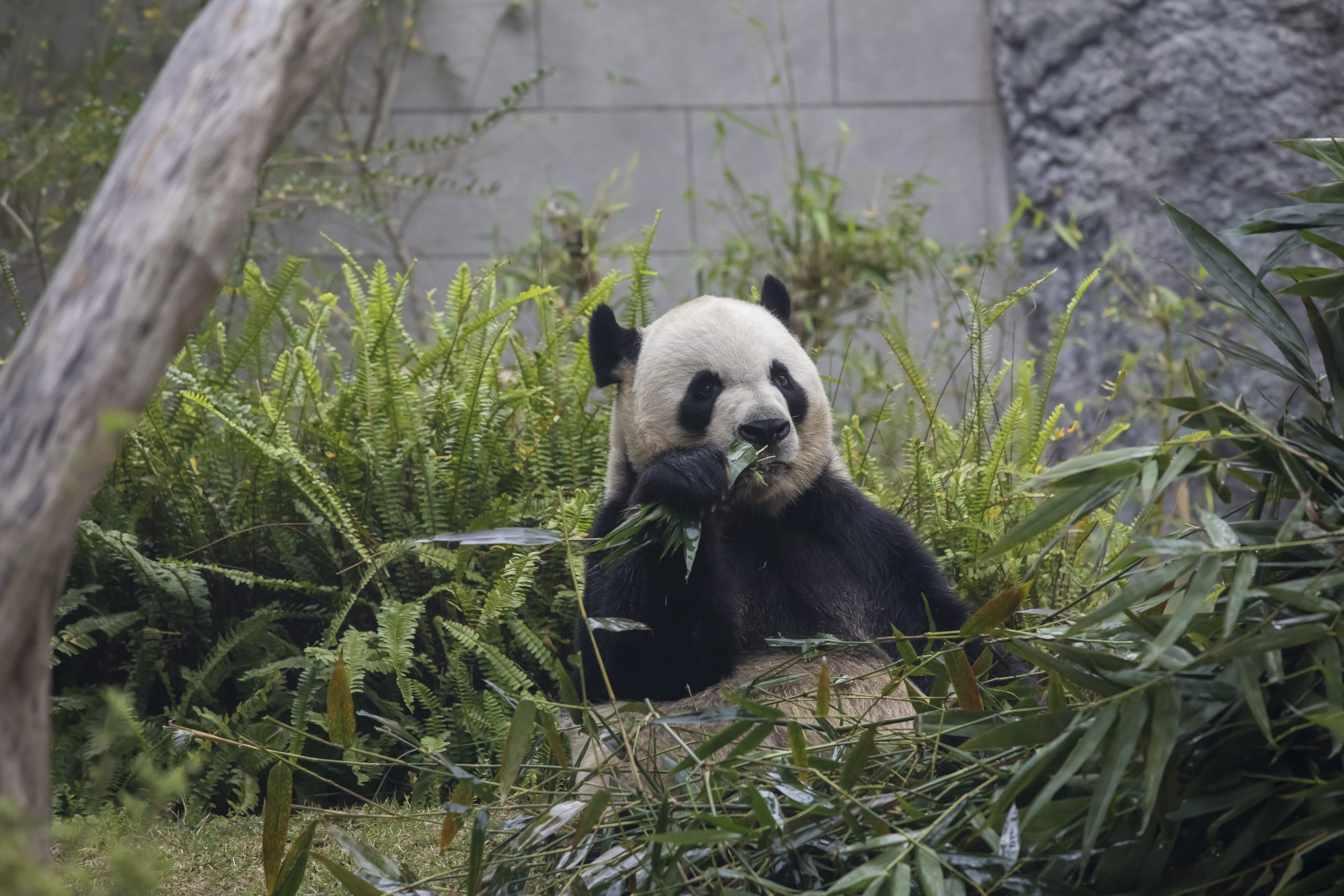
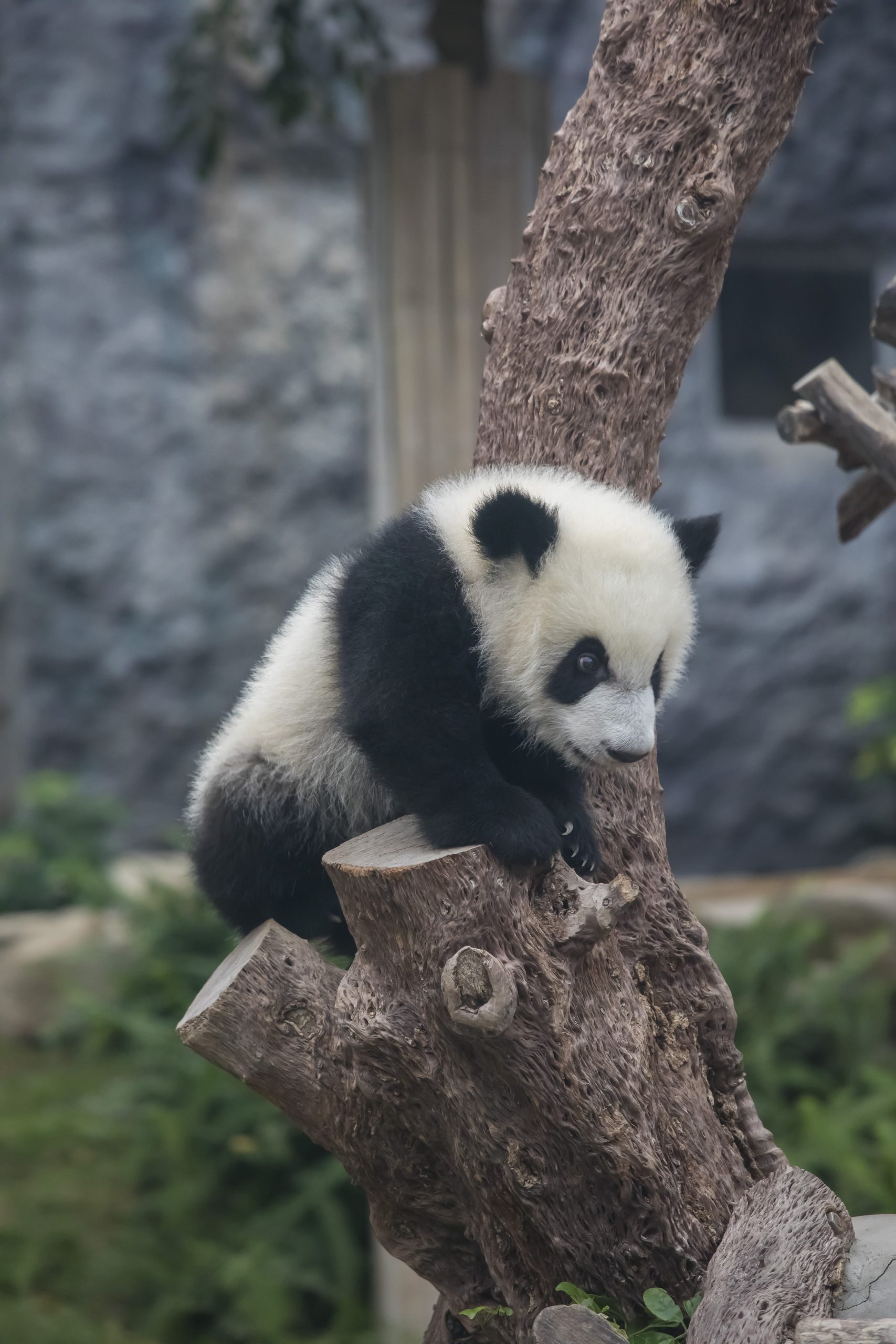
Mok and Chao both applied for their current roles through the Civic And Municipal Affairs Bureau (IACM). “After passing tests, I went to Sichuan and did training on-site,” Mok says. Pandas are native to the southwest Chinese province.
The handlers are assigned to either the giant pandas or red pandas. Although there are occasional changes to their schedules, they never have to look after both at the same time, which allows them to focus on caring for the animals.
“On a typical day, the first thing we do is check on the pandas in their resting areas,” Mok explains. “We make them breakfast, then start to get their activity areas ready, so they can have their bamboo there.”
“Pandas mainly feed on bamboo, which actually has relatively low nutrition levels. So they would spend the majority of their day eating bamboo,” she adds.
Other handler responsibilities include upkeep of the pandas’ resting areas, which are out of bounds to visitors. The handlers also record the pandas’ eating habits, monitor their health, run assessments on their behaviours and create food menus for them. That involves more than just cutting up a bunch of bamboo to feed them with: the red pandas’ diets are more varied than you might think.
“Red pandas mainly eat bamboo, although we also feed them biscuits, pumpkin, carrots and apples to add to their nutrition,” Chao says.
Giant pandas, on the other hand, are a bit trickier to deal with.
“Giant pandas are quite big, and they eat a lot. This is true, but they’re also very picky about the bamboo they eat,” Mok says. “There are types they prefer and others that they don’t like. Their preference for bamboo, like what variety and which part of the bamboo they like, changes seasonally.”
“As handlers we have to really keep an eye on that and record what kind of bamboo they’ve been eating recently in order to arrange for the right type of bamboo for them. Pandas also sleep a lot in order to conserve energy. Occasionally they find interesting things to do,” Mok adds.
Many who reside in Macao and neighbouring cities have been lucky enough to see giant pandas up close, but the rarer red panda is something new for visitors.
“The biggest quirks red pandas have is their behaviour. They’re highly sensitive, which is part of their nature,” Chao says.
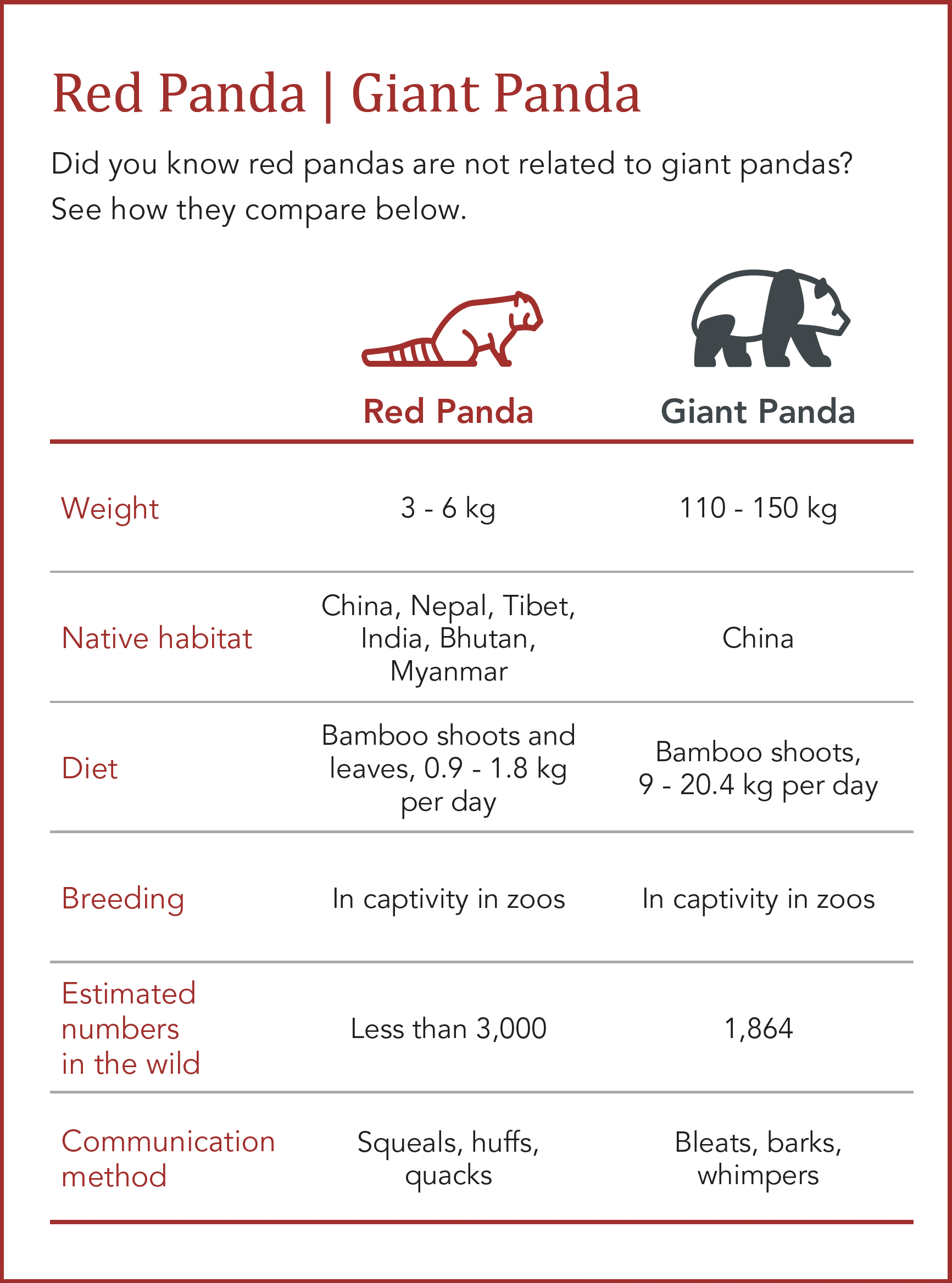 And sometimes, their appearance can cause the most unexpected issues.
And sometimes, their appearance can cause the most unexpected issues.
“Red pandas are incredibly cute, so when visitors first see them people can get very excited, or use flash photography,” Chao says. “Because red pandas are sensitive to smells and sounds, this can affect their emotional state.”
The handler explains that, because red pandas are a much smaller species compared to giant pandas, in their natural habitats they are more likely to end up as prey for the likes of bears and foxes. As a result they are “much more alert.”
“We say that they scare easily, but really they’re just very sensitive to their surroundings.”
“What we try to do is educate people about the red pandas’ sensitivities [so that visitors are aware].”
But because red pandas and to a lesser extent, giant pandas, are both so sensitive, it’s easy for them to figure out who’s who when it comes to humans. “Pandas are very sensitive to a handler’s voice, smells and what clothes they wear. They distinguish between people through these factors,” Chao explains.
Both handlers say that since they started working at the park, they’ve formed an emotional bond with the pandas.
“While we’re on holiday it’s easy to miss them and wonder if they will have grown any bigger, or learned how to climb a tree,” Mok says.
One of the best parts of the job is being up close and personal with the cuddly creatures.
There are fewer than 3,000 red pandas left in the world, while the count for giant pandas stands at 1,864 globally.
“The World Wildlife Fund chose the giant panda to be part of its logo, and that goes to show that pandas are an important symbol of conservation efforts,” Mok adds.
Seac Pai Van Park, which was established as Macao’s first country park in 1984, sits in an area that’s been protected by law since 1981.
There is a strong focus on animal conservation and education on the topic for the public. The park houses flora and fauna and a Pavilion of Rare Animals, where the red pandas call home.
The IACM aims to generate awareness on the threat wild animals face, and the importance of protecting their natural habitats. While the park is free to enter, the Giant Panda Pavilion charges a MOP10 entry fee, which goes towards the government’s Panda Fund. Established in 2010, the fund was set up to promote the conservation of giant pandas and also provides a platform for the public to support them via donations.
In Chinese New Year 2017 alone, the park attracted just under 10,000 visitors in a 10-day period.
When they’re not tending to the pandas the handlers are also responsible for creating content on the park’s website, educating the public about the animals.
“Being part of conservation efforts is great. We’re not just talking about it: we’re able to actually help,” says Chao.
